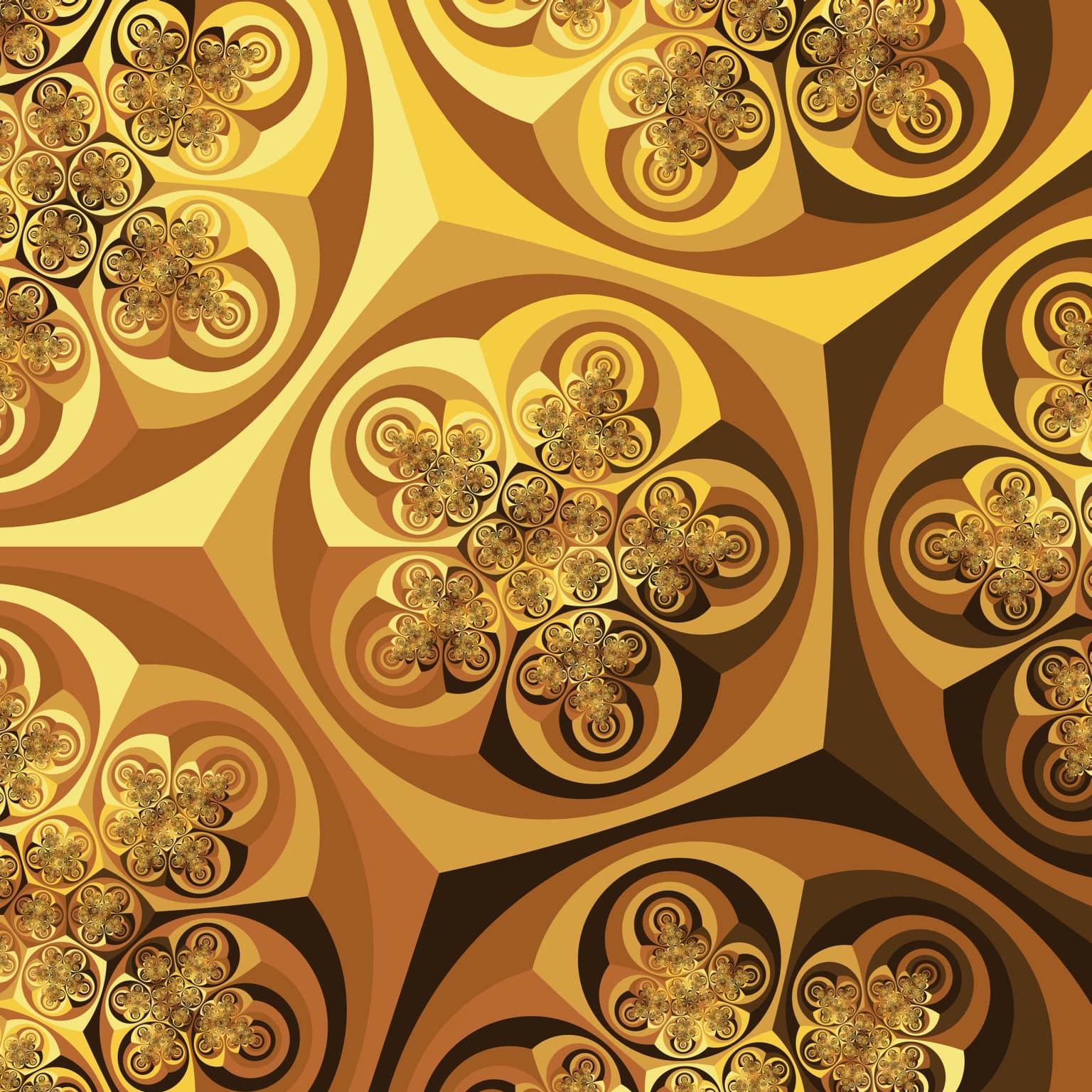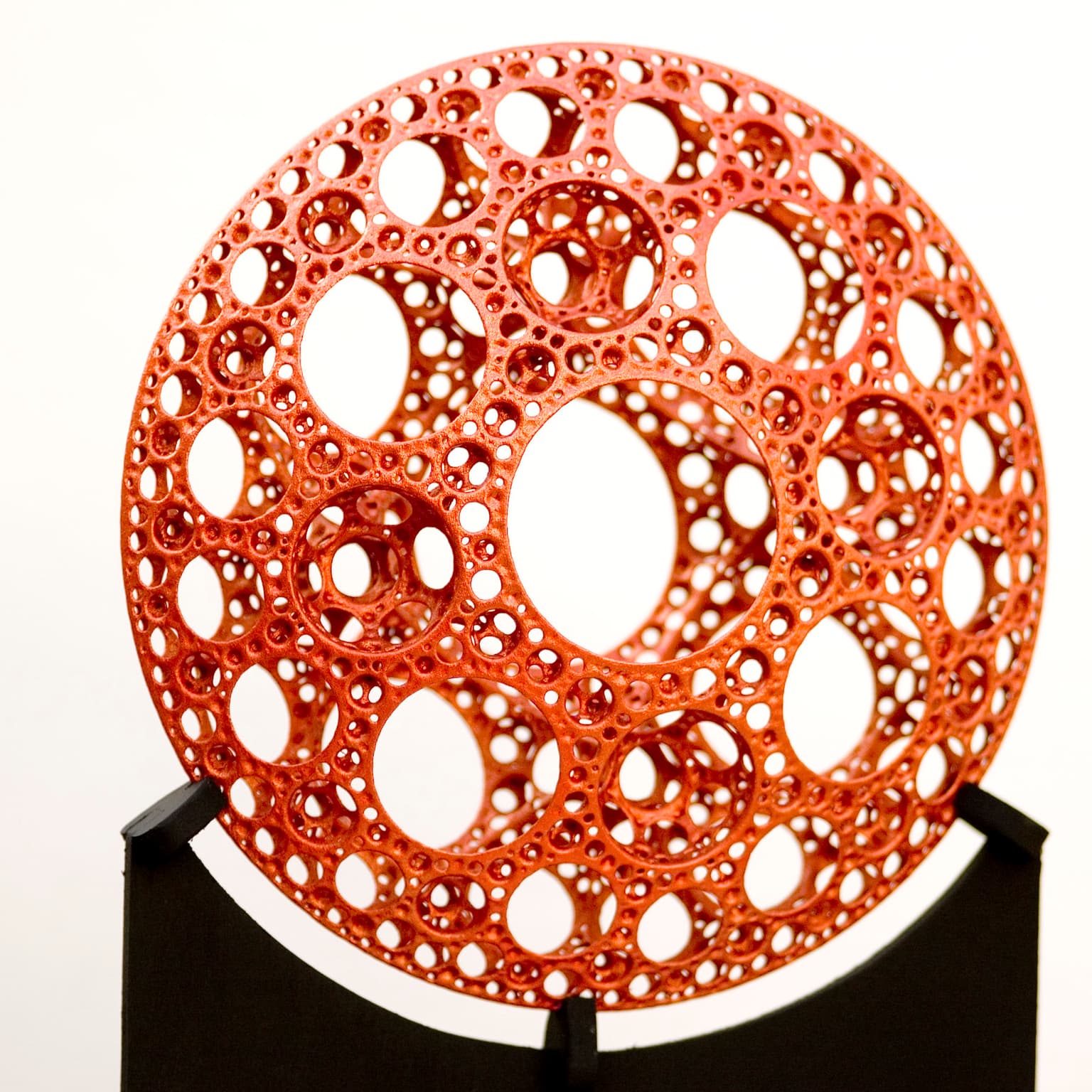2013 Joint Mathematics Meetings
Vladimir Bulatov
Artists
Vladimir Bulatov
Mathematics and Arts Explorer
Corvallis, Oregon
Statement
My artistic passions are purely mathematical images and sculptures, which express a certain vision of forms and shapes, my interpretations of distance, transformations and space. In my opinion, mathematics is a way of thinking, a way of life. My images and sculptures are like photographs of interesting mathematical ideas, which I try to dicover and to bring to the real world. I have always been intrigued by the possibility of showing the intrinsic richness of the mathematical world, whose charm and harmony can really be appreciated by everyone.
Artworks

Klein-Fricke Composition Group Tiling
24 x 24 in
Digital Print
2012
This is tiling of Riemann sphere by kleinian group, which is composition of icosahedral [2,3,5]
and prismatic [2,2,5] groups.
It also can be thought of as a tiling of 3D hyperbolic space by group generated by reflections in 4 faces of infinite tetrahedron with dihedral angles {pi/2,pi/2, pi/5} surrounding one vertex, angles {pi/2,pi/3, pi/5} around another vertex and remaining two vertices and the edge between them located outside of the sphere at infinity.
The tiling is colored with 6 colors using a subgroup of index 6 and its cosets.

Limit Set I
8 x 8 x 3 inch
composite material
2012
This is limit set of 4D hyperbolic symmetry group stereographically projected to 3D space.
If the fundamental domain of the group has finite volume - the limit set is boring sphere S^3
(or the whole 3D space after projection to R^3). However, if we have open fundamental domain of infinite volume, the limit set may be very complex and fills only part of S^3.
The specific group is formed by inversions in 12 spheres. One set has 8 spheres of radius 1/sqrt(3) are located in corners of a unit cube (+-1/2,+-1/2,+-1/2). Another set has 4 spheres of radius 5/sqrt(6) located at x- and y- axes at (+-5/2,+-5/2,0).
Spheres from the same set intersect each other with dihedral angle pi/3. Spheres from different sets are orthogonal.
The exterior disk shape is due to 4 spheres of the second set. Reflections in those form subgroup of 2D hyperbolic tessellations with a 2D circle as a limit set. Reflections in other 8
spheres add amazing 3D complexity to the object.

Bended Circle Limit III
24 x 24 in
digital print
2012
M.C.Escher's hyperbolic tessellations Circle Limit III is based on a tiling of the hyperbolic plane by identical triangles. The tiling is rigid because hyperbolic triangles are unambiguously defined by their vertex angles. However, if we reduce the symmetry of the tiling by joining several triangles into a single polygonal tile, such tiling can be deformed. Hyperbolic geometry allows a type of deformation of tiling called bending. Let's extend the tiling of the hyperbolic plane by identical polygons into tiling of hyperbolic space by identical infinite prisms. The prism's cross section is the original polygon. The shape of these 3D prisms can be carefully changed by rotating some of its sides in space and preserving all dihedral angles. Such operation is only possible in hyperbolic geometry.
The resulting tiling of 3D hyperbolic space creates 2D tiling on the infinity of hyperbolic 3D space, which is a Riemann sphere. The sphere is stereographically projected to the plane.